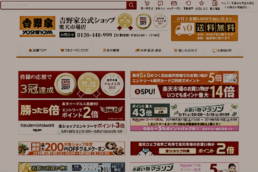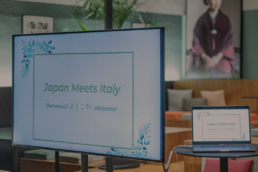Business Focus: Digital events during the pandemic
In 2020 we had a very special year and also for those who like us work in marketing there was an invasion of digital events. We experienced new ways to stay in touch, new ways to embrace each other, new ways to study and work. These are not ways of living and working that we should never have known, on the contrary! The year 2020, said in a very positive way, has accelerated many of these processes. What can the positive pandemic bring us? Surely, looking at the situation, we can answer with "very little", but let's try to look beyond everything.
Digital events: opportunities during the pandemic
Author: SaiKaiAngel
Did this 2020 make the leap into the future shorter? Definitely yes! As for us at Japan Italy Bridge, for passion or need, we made sure to stay afloat and continue to present our proposals ... online!
Anyway, we were already organized and prepared for this, considering the sentence we always said when introducing ourselves as "The future is online". Now, we are sure that that phrase, which we were waiting for it to become our daily heritage maybe in a while, has suddenly become customary good from this moment! We at Japan Italy Bridge are committed, waiting to be able to physically embrace you again, to build and propose digital events and situations that can give you emotions, if not equal, but similar to physical ones.

We have experienced, during the lockdown, many online events such as school, work, webinars, meetings, often seeing them as something new and more exciting than the online presence. Why? Simply because we are facing something new. Before we get used to this too, let's try to exploit the enthusiasm in all its essence.
Digital Events
Let's talk about online events, for example. Yes, because apart from the online work we have always done, events were the only thing we kept offline and based only on the presence of people. While waiting to do it again, we looked for online solutions that could actually, for the moment, create if not the same enthusiasm, something similar.
How do you organize an online event?
First of all, you have to focus on the guests, just like the event in the presence, nothing changes! You have to identify the people who might be interested in that event and become an interesting link for companies that want to communicate their work to others.
What is the main goal of the online event?
The online event, like the offline one, is to reach as many interested people as possible. You have to make sure that you create the right platform and the right place for them to best facilitate their presentation and communication with other participants. The online event, therefore, becomes a favourable place to exchange opinions that can then become a tool for the contact between companies. One of the positive things we find in this is the reduction of organizational costs. It then becomes completely free without any problems of audio, lighting, culinary entertainment. The most important thing is to have a platform capable of holding and maintaining the event without problems and, certainly, a good connection. Among the most popular platforms are zoom and meet.
Another absolutely essential thing is the ability of the event's creator to entertain guests by ensuring that spaces and moments can be respected. In this case, we need a good "host" who is not very different from those we see on TV programmes. The presenter must be able not only to ensure that the times are respected but also to keep the enthusiasm high for the entire duration of the event, intervening when the situation fades away or when it becomes too bright. Nothing so different from the offline event, in short. This is proof that the creator of the event is part of a consolidated company capable of dealing with any type of situation.
At Japan Italy Bridge, for example, we focus on creating a bridge, as our name suggests, between Japan and Italy. Until this bridge can be built physically, as we have already done with our previous events, two random names "Japan meets Italy" and "Spindle". we are very keen to keep the interest and communication between these two nations high. For this reason we have studied how to make our events online and interesting.
Obviously, one of the things we think may be essential for a digital event, is not the payment, but at least the registration. Registration will allow us to have a closed list of participants and a beginning of moderation. The registration should at least contain the basic information: name, surname and an email to be contacted. In this way, you will be able to have not only a certain moderation of the event, but also a way to communicate suitable for your profile. The guest will not find a bedlam of people who are not interested in anything about the event, but only and only guests interested and enthusiastic to participate, listen and share.
Listening and sharing

Let's not go so far from the offline event, in this case, the focus is always the same: finding people and companies interested in sharing. We all know how difficult it can be to connect companies of different nationalities, but we are also sure that Japan and Italy have a lot to share and feel united, otherwise, we would not do this job!
The online event should not be scary, if we look at this carefully, we will realize that it is not so different from the event in presence.
So what do we need to create an online event?
- Identify people and/or companies that might be interested in the event.
- Create the right environment to facilitate communication between them, perhaps by establishing a dialogue first.
- Leave the guests in the right place and moderate the time available to them in order to make it the same for everyone.
- To have a good interlocutor and manager of the event that can enforce time moments and keep up the enthusiasm of the audience.
- To have the conviction to do the right thing, without being frightened by the difference between offline and online.
Whether it is on a digital platform and in presence, many things remain the same, one of which is enthusiasm.
Never lose your enthusiasm, it is what will allow you to live properly at any time, making the waiting less heavy and above all fruitful. You will learn to "feel" the enthusiasm of the other person and also to create new connections. make it a new challenge!
As for us at Japan Italy Bridge, we are ready to continue to build this bridge also digitally and then continue to do it in person.
Business Focus: E-commerce after the pandemic
The effects of the Coronavirus are still being felt, however, we are not talking about positive cases but about online presence and e-commerce. We continue our Business Focus features and today we are talking about how e-commerce platforms have influenced this 2020 and how they will influence our future.
The importance of e-commerce during and after the pandemic
Author: Erika
During this 2020 we understood how extremely important it is to have an online presence, for any company, even more so for shops. Not only social media but above all e-commerce has also depopulated due to the pandemic. With the forced closure of shops, in fact, many businesses have found themselves having to run for cover and create an online presence very quickly.
The impact that the lockdown has had on the habits of us Italians, but also of the entire world population, is extremely evident. In fact, in recent months, e-commerce has become one of the main channels to buy essential products without having to leave home.
We can in fact see from the data how between February and March 2020 online sales in Italy grew significantly compared to the same period in 2019. The favourite moments for Italians to shop are during the weekend. Precisely because of the coronavirus epidemic (COVID-19), on 8 March online sales increased by 90% compared to the same period of the previous year.

Some data
According to the GfK Consumer Panel, almost 4 out of 10 Italian households made their first online purchases in March. While, from the beginning of the year to date, 2 million new online consumers have been registered in Italy (out of a total of 29 million).
Between February and March 2020, online sales in Italy grew significantly compared to the same period in 2019. In fact, compared to the first six months of 2019, the total amount was 700,000 new consumers.
According to a recent survey conducted by Ipsos on the impact of the Coronavirus pandemic on individuals' attitudes and behaviour, in Italy, 31% of respondents said that the frequency of buying goods online has increased. On the other hand, almost half of the respondents stated that their frequency of online purchases has not changed at all.
Thanks to the COVID-19 pandemic, online retail platforms experienced an unprecedented increase in global traffic between January 2020 and June 2020, even surpassing the Christmas holiday traffic peaks. Overall, retail websites generated nearly 22 billion visits in June 2020, compared to 16.07 billion global visits in January 2020.

In short, having an online shop is now an inevitable option for any business. Moreover, according to analysts, the online commerce sector is the one that will grow the most in the world economy, with an increase calculated up to +55%.
This is precisely the time to equip and invest in digital technologies and focus on digital transformation. Adapting your services to online sales is the smartest move to make at this moment in history.
The cornerstones of a perfect e-commerce
By now we already know that the online consumer is much more demanding and sometimes more suspicious than the classic customer who visits us in the shop. However, user satisfaction is one of the fundamental cornerstones of a good e-commerce. Reliability and quality of service, user-friendly interface and customer service are fundamental points.
In addition, there can be no lack of excellent communication and marketing management specific to an online shop. Japan Italy Bridge not only builds high-level e-commerce but also communicates your brand online on various platforms. In fact, SEO optimization for an e-commerce and brand awareness help to increase sales and the customer's perception of the brand itself.
In particular, communication and marketing are the highest obstacle to overcome but also the focal point for the scope of an e-commerce. Investing in professional translations and a team that follows the social and digital marketing part helps to position your brand on search engines.
What Japan Italy Bridge recommends is to create a multi-channel system that will lead you to a winning e-commerce and increase your sales and revenues. together with that, you may also discover markets that were previously cut out of your sales strategy.

This COVID experience has taught us that we must always be ready for change and differentiate our presence on offline and online platforms. The way we sale our products and the means with which we do this have drastically changed. Virtual retail market has received disruptive effects that no one would have imagined until recently. This has had a major impact on the economy and organisation of many companies. Nowadays it is in fact normal not only to receive take-away food at home, but also other types of materials.
After the experience of the pandemic, it has become crucial to have an online presence. If your company is interested in building an e-commerce or interfacing with the digital audience, you can contact us and find out about our offers.
Business Focus: Social Media during and post the pandemic
Social media has long been an integral part of our lives, but it was during this global pandemic that we discovered how important this medium is.
The importance of social media in pandemic times
Author: Erika
The COVID-19 pandemic has completely turned our lives upside down, not only in terms of health care but especially in our daily routine. If there is anything we have learned from this situation, it is that we must be prepared for whatever the future holds. No goal is realistic, but in our plans, we must try to get as close as possible to what will be the reality.
Many are wondering what the post-COVID-19 world will be like and finding an answer is not easy. But one thing is certain, we must be ready to change and adjust our marketing strategies at any time and digital seems to be the right way to do it.
In this article, we are going to see how COVID-19 has affected the use of social media by companies.
With social distancing, digital and social media have had an impact of considerable intensity. In fact, we have seen a boom not only in messaging and video calling apps, but also all those platforms that have allowed us to make digital events.
Both in our private and working lives, our daily lives have been touched and marked by a change in many habits. However, not all the consequences have been negative.
The famous digital transformation, which was at a standstill in Italy, has accelerated considerably as a result of this global situation. Driven by the impossibility of continuing with the old methods, even the most stubborn brands have surrendered to the digital evolution of communication.
Social marketing strategies are changing

Marketing strategies have changed to adapt to new media and tools, but first and foremost the way companies communicate and relate to clients has changed.
In this pandemic period, the public has changed their needs and companies have had to learn how to relate in an advantageous way. This is why a lot of social media marketing has changed during the pandemic.
Spending much more time at home and bombarded by all this negative news, the public felt the need to feel connected to the world in some way. This is one of the fundamental aspects that has allowed companies to take advantage of the opportunities and offers related to digital transformation.
For those of us who are involved in marketing, you will have noticed that the publication times of the posts have been completely overturned. The COVID-19 has shuffled its cards around a lot, and if you used to prefer to post on socials on specific days during the lunch break, now this period has been extended to all weekdays. Instead, what we call "commuter time" has taken a back seat, so from 5 pm onwards socials are now less popular.
Whereas before the weekend was one of the worst times to publish, now post lockdown on the morning of the weekend has become one of the most sought-after moments.
Most viewed social media during the pandemic
With forced lockdown, TV programmes suspended, news monopolised by Coronavirus news, the public desperately needs entertainment. This has caused audiences to pour into social media, particularly Instagram, YouTube and TikTok in search of distraction. For this very reason, it has become even more crucial to publish at the right time.
The volume of messages sent and received has also changed. Although for some sectors there has been a decrease in the publication of posts, for other companies the volume has remained constant or even increased.
In fact, some companies increased the number of messages addressed to the public during the pandemic. For example, the entertainment sector has increased its social media activities to provide a distraction to citizens already destroyed by social distancing.
Other companies linked to the sport and tourism sectors have been particularly affected by the restriction or suspension of all activities. And it is precisely in these sectors where there has been a decline in communication. However, this was the wrong step to take. It may seem the most logical choice to cut communication-related funds in a time of crisis like this, but in reality, it is one of the most counterproductive gestures a company can make. But we will talk about this in one of our next articles.
Social media as a tool to connect people during the pandemic


Since the beginning of 2020, we have seen how our lifestyle has changed completely by creating new rules for everyone.
In fact, many companies have found themselves having to recalibrate their strategy in light of what has happened. We have asked ourselves many times whether this content is suitable for the current situation, and many times we have found ourselves removing it. In a period like this where people are particularly sensitive to all kinds of messages, it is very important to control what is shared but even more important is to adapt to each situation.
Listening to your clients' requests and feelings and identifying their needs is fundamental nowadays in order to understand how to orient your strategy. The pandemic has created a general climate of terror and for this reason, the public is now looking for positive conversations. People have grown tired of negativity and all this concern about COVID19 and are looking for social distraction.
In March, the number of messages on the topic of helping others increased by 1.174%, culminating in 19.5 million messages during the month. In this period of insecurity, people are trying more than ever to connect and support each other. Social media has become the epicentre of this movement.
In SproutSocial's #BrandsGetReal 2019 survey #BrandsGetReal, it was found that 91% of respondents believe that social networks have the power to connect people, of which 78% would like brands to use social networks to bring them together. This sentiment became even stronger after the pandemic.
Being able to understand what your audience wants and show them that your company has understood this need is the best solution for good communication even in this strange 2020.
Business Focus: The weird world of Japanese web design
Have you ever wondered why Japanese web design is so different from that in the West?
The weird world of Japanese web design
Author: Erika
Japan Italy Bridge offers services for companies and part of our job is to create websites. "What's new" you might say, yes because there are so many agencies like us, but what makes us different from the others? Well, we have the ability to adapt the Japanese style and visual to Western-style and vice versa.
It is very, very important for every company to have a website that represents their brand. However, it often happens that the style and design we use in Italy is not really suitable for the Japanese language and people.

In fact, if we analyze even just visually the Japanese sites, the differences immediately jump out at us.
As we know, in most of the Western world, websites have a simple layout. In fact, compared to the early 2000s, we have replaced the myriad of links with relevant and concise content that quickly leads us to our goal.
However, there is also a different culture in Japan in terms of visual taste. In fact, some websites have changed very little since the early 2000s. In this respect, we can really see how different sites are overloaded with links and information. This is totally inconceivable for a Western eye, while it becomes the norm for a Japanese one.
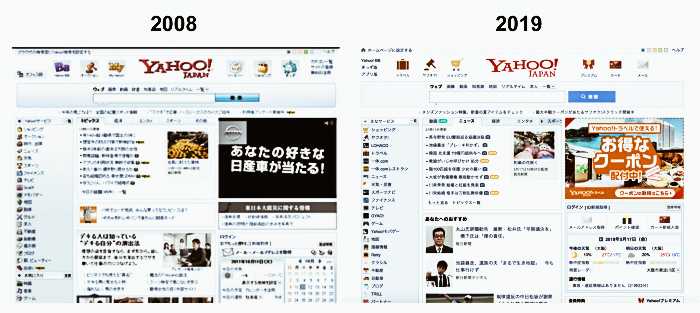
Yahoo was one of the most popular search engines in Japan and still is for many homepages. However, as you can see from the photos, its design and layout have changed very little in the last 10 years.
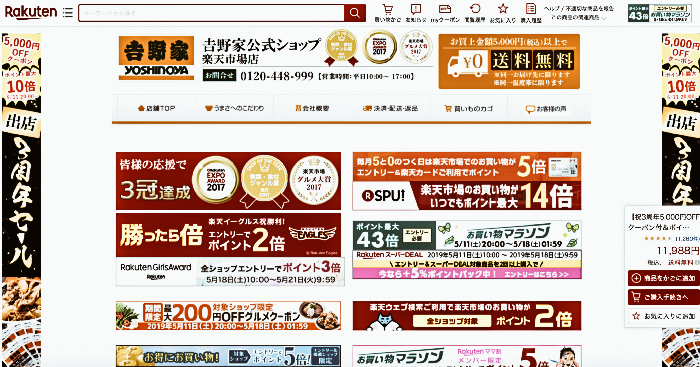
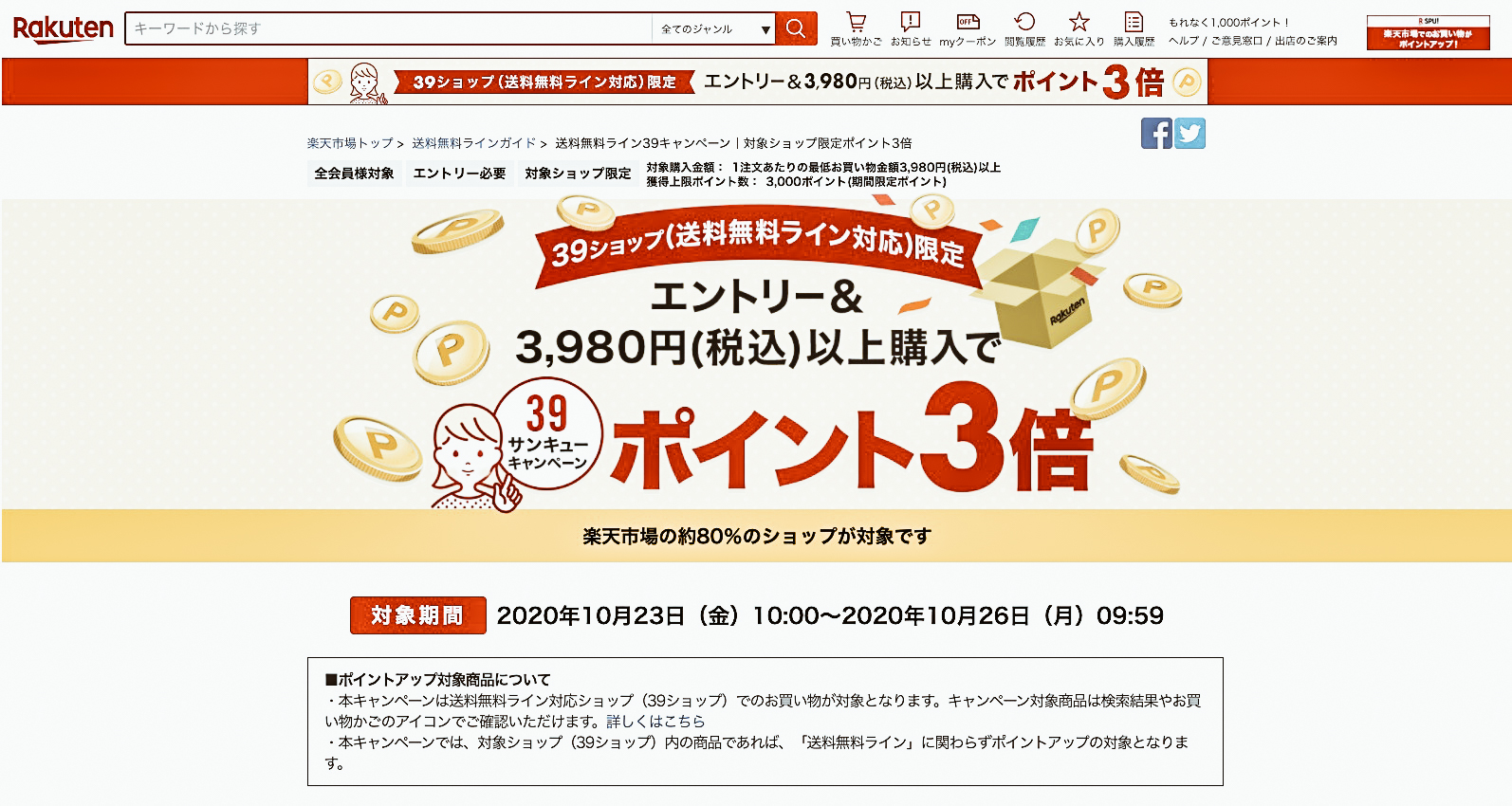
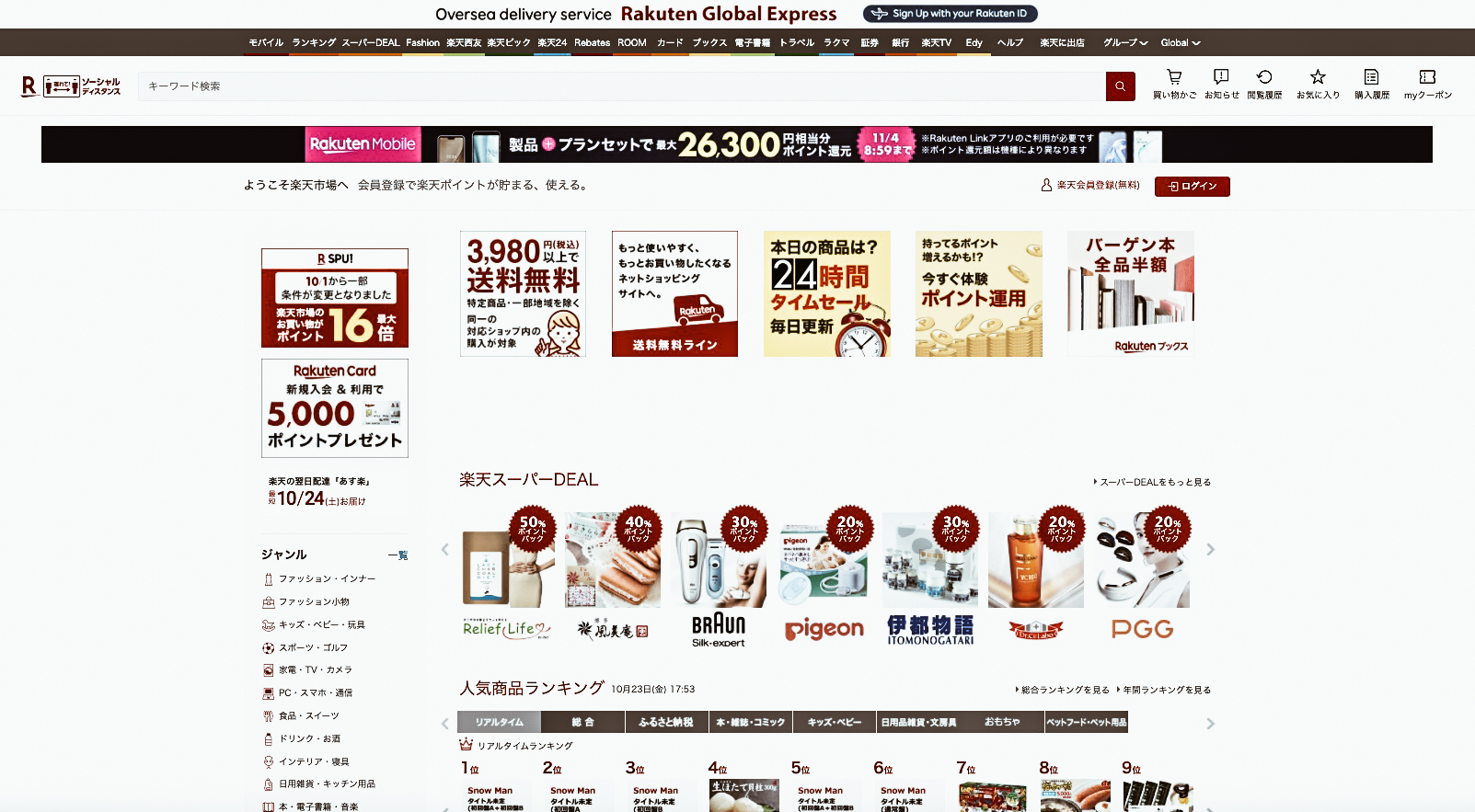
Another example is the homepage of Rakuten, the nation's largest online shopping centre.
Rakuten is the Amazon of Asia and every shopkeeper can customize their own page. This results in a large display of various images, banners and pop-ups on different pages that sometimes take a long time to scroll through.
Why is Japanese Web Design like this?
But here's the real question, why does web design in Japan have to follow these certain canons of style? The answer is simple. The majority of the Japanese people are older users who prefer to maintain the tradition. This also happens in the visual style of how websites are built and experienced.
This makes it complicated for companies to change to a style that we might call more international.
Moreover, most Japanese users use the internet via desktop and not mobile support. So even the biggest websites tend to keep the current design, also not to confuse the end-user.
Another reason why Japanese people prefer this style that we would call "old" is also because of their information culture. In fact, if you have ever been to Japan or seen some pictures of the country, you will have noticed that signs are omnipresent. The Japanese are bombarded with bright neon lights and signs that tell of shops, special offers, and occasions not to be missed. This also transpires on websites where the Japanese people prefer to have all the information immediately.
The LINE Case
When the LINE messaging app (the Japanese equivalent of Whatsapp) decided to change and simplify the layout of their homepage, the Japanese people did not take it very well. In fact, at that time, users went wild with one-star reviews and numerous requests to the company to change to the old design.
Change on the horizon
However, despite the preference for a more traditional approach, some young people in their 20s and 30s have stated that they prefer a more minimalist design.
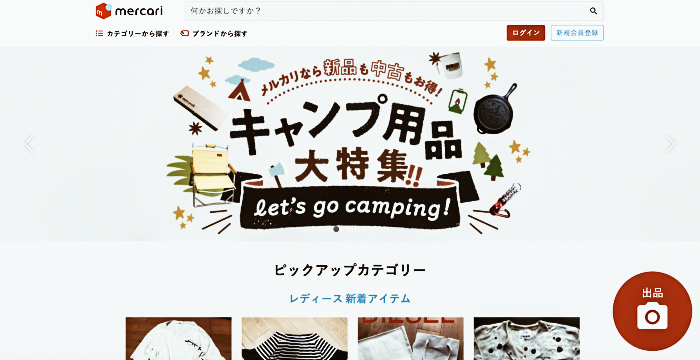
The Mercari case is in fact an example of this. We are in fact talking about a site that offers online auction services with a simple and user-friendly interface. In a short time, Mercari has taken over Yahoo Auctions, the most popular app in Japan for these services.
The history of this brand has shed light on the importance of a good UX layout, encouraging the Japanese to hire new designers on the verge of change.
Japanese companies will have to start adapting to a more modern design not only to be more attractive to a younger audience but also to become more competitive internationally.
If you liked this and our other articles, join our newsletter to receive exclusive updates and many new articles.
Business Focus: Influencer Marketing in Japan, 5 things to know
We have all heard of Influencer Marketing but what are the differences in Japan?
Japan Italy Bridge offers services to companies in the field of Digital Marketing and events. Many Italian companies that have requested our promotion services towards the Japanese market, asked us what are the differences between the two countries regarding Influencer Marketing.
Influencer Marketing in Japan: 5 things to know
Author: Erika
For those who do not know what Influencer Marketing is, we are talking about a branch of marketing that benefits from the use of bloggers and influencers with a specific target audience.
Nowadays, this strategy is one of the most effective methods in most markets, this also applies to the Japanese one. In fact, Influencer Marketing in Japan plays a big role but the rules are different than in Western countries.
Today we share with you 5 differences to help you understand better.

The language barrier
One of the aspects of Japanese social media and therefore also of Influencer Marketing is that everything must be done in their language. Unfortunately, Japan is ranked 49th among the 88 countries and regions in the ranking of English language study and knowledge. A lack of expertise when you think about how much Japanese use social media to get informed and communicate.
Because of this, classic global influencers such as Chiara Ferragni, Cameron Dallas and others are not as influential as they are in other countries accustomed to the English language. In fact, sometimes they are almost unknown even compared to local influencers with fewer followers.
This leads to a big dilemma for companies: to use local influencers or completely ignore the Japanese market? True, the Japanese market is now not as profitable as the Chinese one. However, Japan is ranked 3rd in the GDP world ranking and this is too important to completely ignore this country and its audience.
As said before, it is true, Japanese Influencers have fewer followers than global ones. However, precisely because they speak in a language closely related to the culture of the Rising Sun, this leads them to not have many followers in the rest of the world.
What we can understand from this data, however, is that in this case engagement becomes extremely important. In fact, Japanese influencers are extremely connected to their audience and the interactions far exceed those of the westerners one.
Japanese hashtags require a cultural background
When a company opens to the Japanese market, it must understand the uniqueness of this country and its culture. It is therefore important to work with correct hashtags and use them properly. This will lead us to find the target community that we can approach and get a return on our investment.
Influencers and micro-influencers can be found using hashtags. However, finding the correct Japanese hashtag is not so easy for those who do not speak the language and do not know the culture. Moreover, very often the most common hashtags are neologisms.
For example #インク沼 is a direct translation of "Bottomless Swamp of Ink". Apparently, this doesn't make any sense, except that "Bottomless swamp of something" is an internet slang used a lot by Japanese people to describe when someone is really passionate about something. However, if we take away the cultural background, this hashtag completely loses its meaning.



photo credits: @v_sarasara, @tommy_notes_16 , @mizuki___iz
In addition, Japanese hashtags can often be very complicated for a Western eye to understand. This happens because of the three ways of writing the language, namely the mix of Kanji, Hiragana and Katakana.
So when we use Japanese hashtags, we have to be careful how they are written because the combination of the three ways can bring different meaning. In the language of internet, a hashtag written in a different way also brings different results on an audience level. In fact, this can affect the number of people we might reach.
Influencers in Japan are distributed on different platforms
Even in the West, it is rare that an influencer has the same strength on all the most popular social platforms. Many are popular only on Instagram, others only on Tik Tok or Twitter. This has even more effect in Japan with the presence of some specific platforms for Japanese culture. For example, we have NewsPicks that interfaces with a purely corporate audience. While note is a social dedicated entirely to the content creators such as stories, tutorials, news blogs and especially manga.
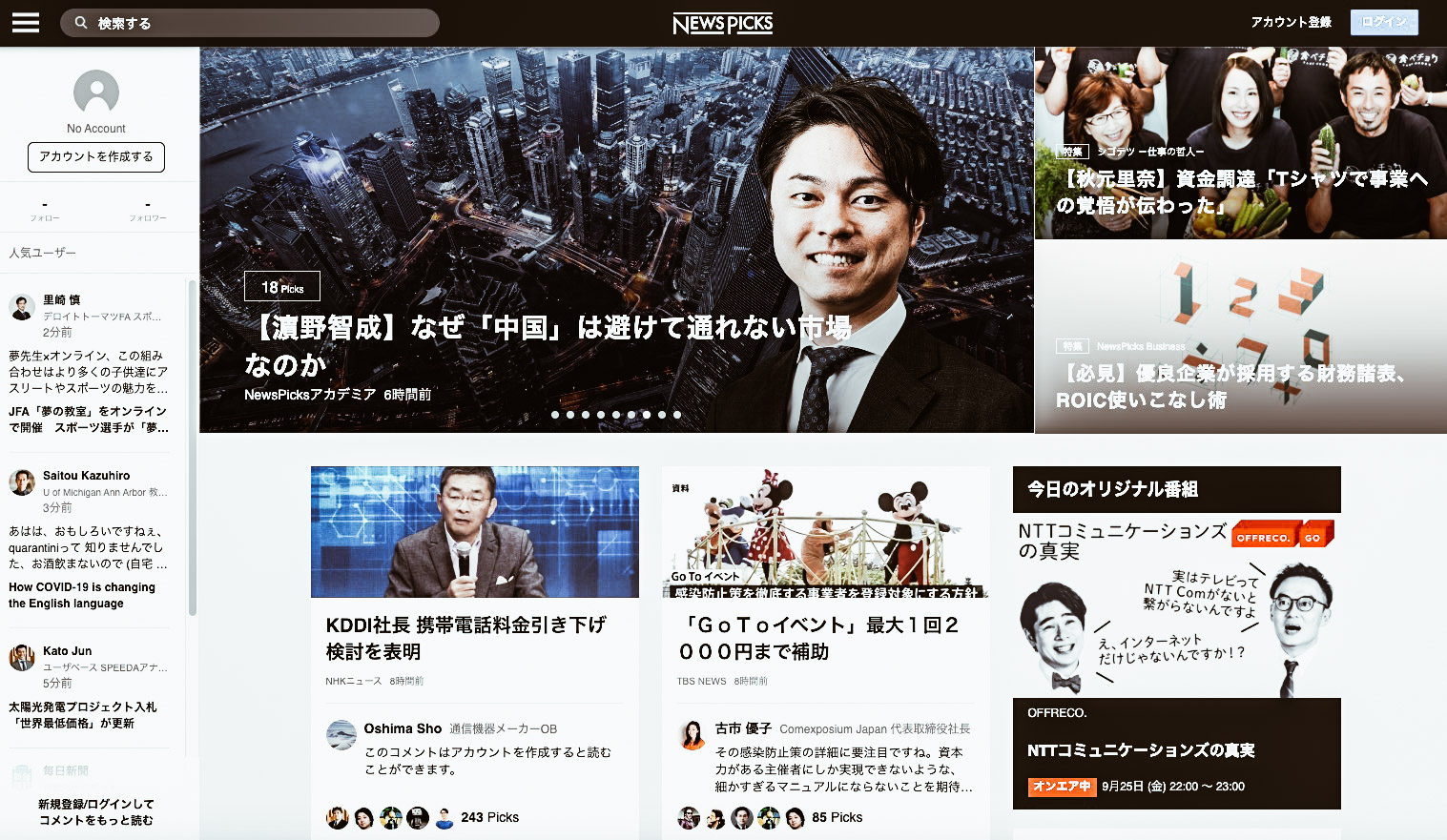
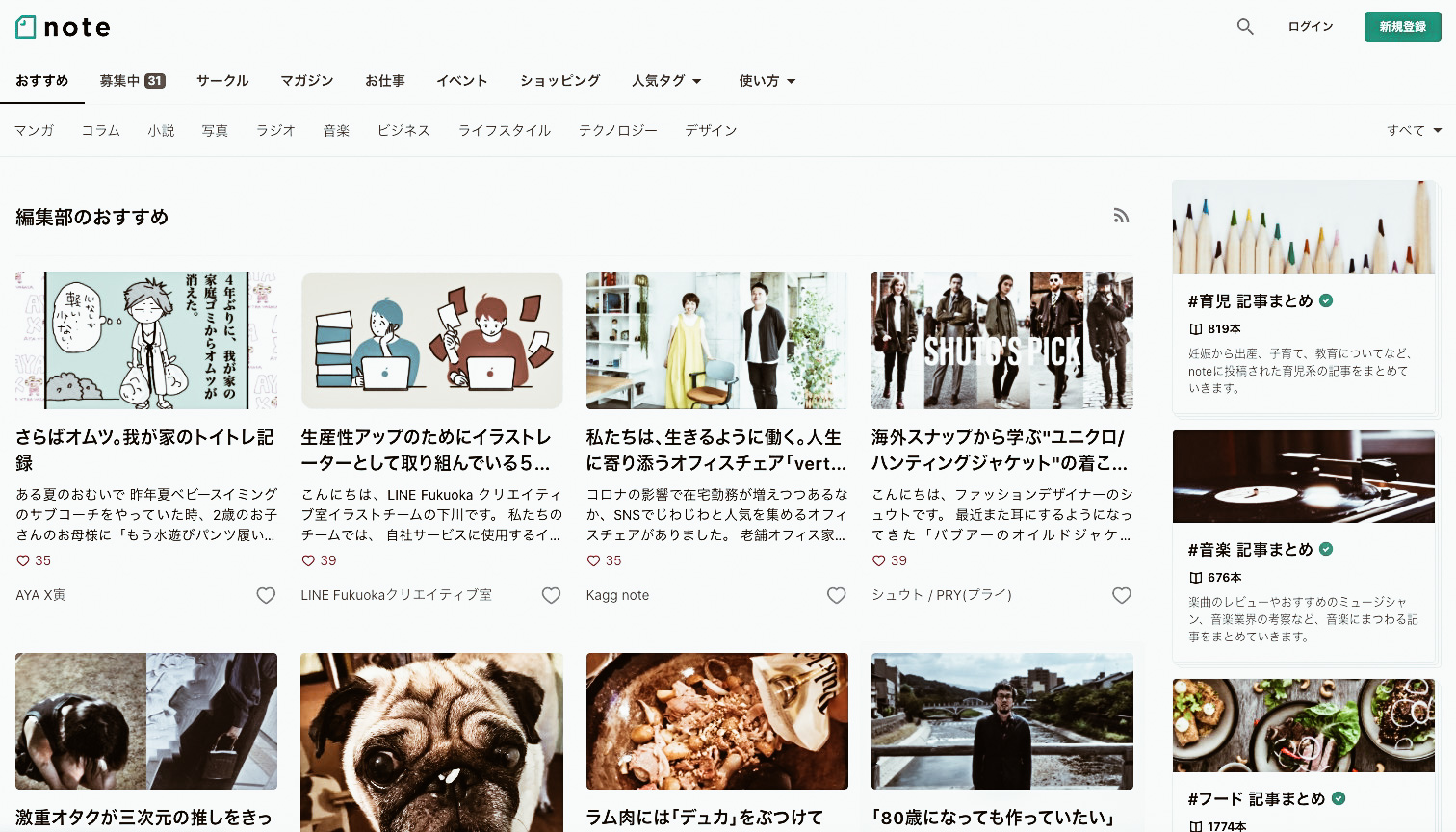
The top Influencers and agencies
As it also happens in the West, many Japanese influencers are followed by some agencies when they start to become popular. At the moment, unfortunately, there are few influencers who work freelance. So, if you want to work with an influencer who belongs to an agency, you have to go through the agency itself.
All this has its pros and cons.
Pros.
- Access to major influencers
- You save time in finding the right influencer since agencies like ours cover this part of the work for you.
- The agency negotiates contracts and fees
In this case, the work of the agency therefore becomes a benefit for the company that finds itself having a job tailored to its interests.
Cons.
- Higher costs
- Minor flexibility
- Direct contacts of influencers remain private
Unfortunately, when using an agency you have to comply with the rules of the agency and these vary from agency to agency.
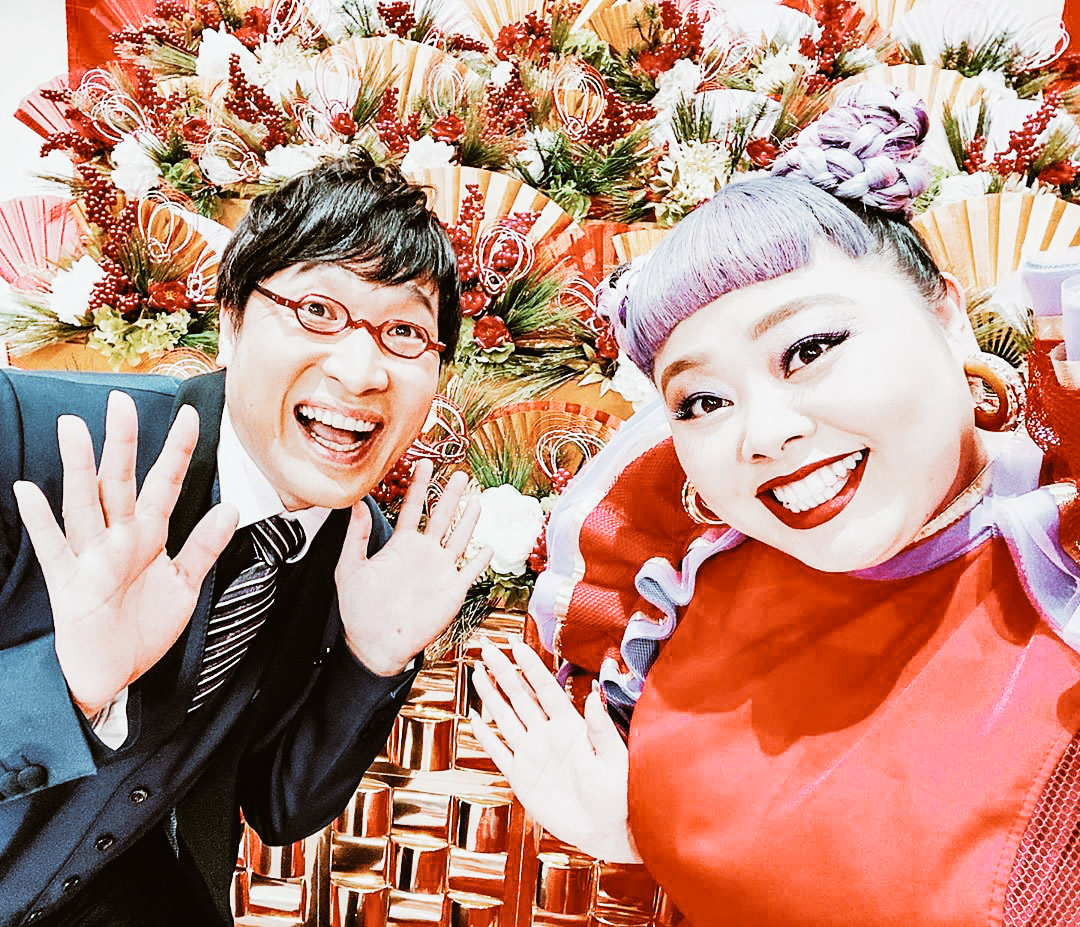

photo credits: @watanabenaomi703 , @rolaofficial
Undisclosed paid posts
Japanese people are very strict when it comes to honesty and transparency. This severity is also applied in Influencer Marketing in Japan. In fact, when paid posts from influencers not reported as such, they tend to be ignored by the public and give a bad impression.
However, there are no direct laws governing the transparency of an Influencer-sponsored post in Japan. In addition, not all influencers are aware of the right way to communicate a partnership.
For a company, it is therefore very important to educate the chosen influencers and not to work randomly to get impressions.
In the West, we now have clear guidelines on the use of sponsorship through Influencer Marketing and these should also be used for collaborations with Japanese Influencers.
If you liked this and our other articles, join our newsletter to receive exclusive updates and many new articles.
Japan Meets Italy: Networking aperitivo - 1st edition
Here we are with a new event organized by Japan Italy Bridge, we are talking about "Japan Meets Italy: networking aperitivo".
As you well know by now, the purpose of Japan Italy Bridge is to bring together and promote Japanese companies in Italy and vice versa. Through digital marketing, the creation of websites and the management of events, we aim to help Japanese companies to promote themselves on the Italian and European territory and vice versa.
After talking to various realities in the area, we noticed a lack of chances to create new connections between the various companies. For this reason, we decided to create "Japan Meets Italy: networking aperitivo", a recurring appointment to give the Japanese companies in the area the opportunity to make themselves known, create new connections and spend pleasant time together.
On January 30, 2020, we invited 30 companies on the Italian territory to join us for an evening of sharing. The first meeting held in TENOHA Milano found great success among the participants. A moment not only of joy and light-heartedness but also a beautiful occasion where the participating companies were able to create new connections. A networking evening where Japan met Italy to strengthen this friendship that has lasted for more than 150 years and to create even stronger partnerships between the companies of the two countries.
Some of the participating companies shared updates and presentations of ongoing projects in order to generate a connection between the realities of the territory.
We want to thank all the companies and all the people that have joined us to celebrate this evening. Japan Meets Italy will return in the spring with a brand new edition and many other opportunities to meet and connect with each other.
For more information and to participate in the next edition: angela@japanitalybridge.com
Photographer: Alberto Moro










